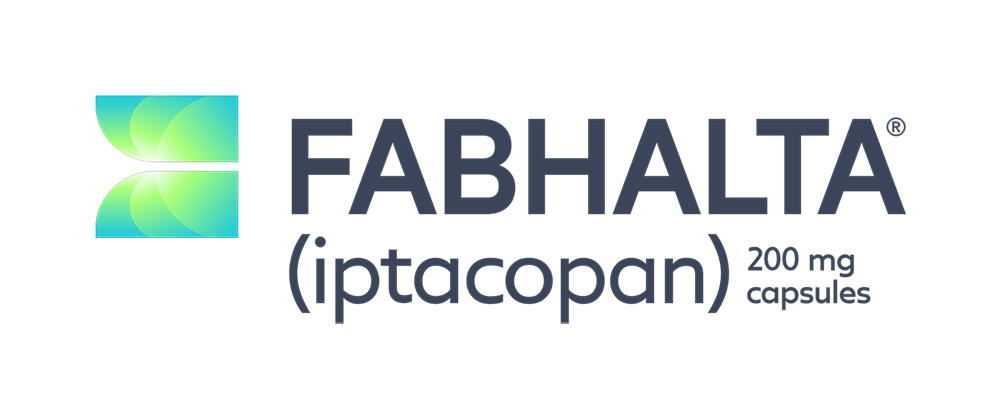Study design for FABHALTA® (iptacopan)
IN ADULTS WITH C3G, TO REDUCE PROTEINURIA1
APPEAR-C3G: A phase 3 clinical study assessing FABHALTA in reducing proteinuria in adults with native kidney C3G1,2
Study design1: A randomized, double-blind, placebo-controlled study (up to Month 6)
Study population1: 74 adults with biopsy-confirmed native kidney C3G who had a UPCR ≥1 g/g and eGFR ≥30 mL/min/1.73 m2. Safety and effectiveness of FABHALTA in patients with recurrent C3G following kidney transplant have not been established
Background therapy1: Patients were required to be on a maximally tolerated RASi and could be on a corticosteroid and/or MMF/MPS at baseline. All background therapies (eg, RASi, MMF/MPS, corticosteroids) were required to be at stable doses for 90 days prior to randomization and throughout the study. Randomization was stratified according to whether patients were receiving concomitant immunosuppressive therapy
AT MONTH 6, AFTER DOUBLE-BLIND PERIOD | AT MONTH 12, AFTER OPEN-LABEL PERIOD | |
Primary End Point1,2 |
|
|
Key Secondary End Points1,2 |
|
|
*Defined as a ≥50% reduction in 24-hour UPCR compared to baseline and stable or improved eGFR compared to baseline (≤15% reduction in eGFR).1
KEY INCLUSION CRITERIA1,2
UPCR ≥1 g/g
eGFR or measured GFR ≥30 ml/min/1.73 m2
Serum C3 <77 mg/dL
Patients aged ≥18 to ≤60 years with biopsy-confirmed native kidney C3G in the 12 months prior to enrollment
On a stable, maximally tolerated RASi. All background therapies (eg, RASi, corticosteroids, and MMF/MPS) were required to be at stable doses for 90 days
Vaccination against Neisseria meningitidis and Streptococcus pneumoniae. Recommendation to be vaccinated against Haemophilus influenzae type b at least 2 weeks prior to first dose
KEY EXCLUSION CRITERIA2
Solid-organ or cell transplant, including kidney transplant
Rapidly progressive crescentic glomerulonephritis
Renal biopsy showing interstitial fibrosis/tubular atrophy of more than 50%
Postinfectious glomerulonephritis
Monoclonal gammopathy
Active systemic bacterial, viral, or fungal infection or the presence of fever
History of recurrent invasive infections caused by encapsulated organisms
Use of complement inhibitors within 6 months prior to screening
Use of immunosuppresants (except MMF), cyclophosphamide, or systemic corticosteroids (prednisolone >7.5 mg/day or equivalent) within 90 days of randomization
The APPEAR-C3G study evaluated patients through Month 121,2
Click on image to enlarge.
Selected patient baseline demographics and characteristics1,2 | ||
| FABHALTA (N=38) | Placebo (N=36) |
Geometric mean 24-hour UPCR, g/g (95% CI) | 3.3 (2.8, 4.0) | 2.6 (2.2, 3.1) |
Mean eGFR, mL/min/1.73 m2 (SD) | 89 (35.2) | 99 (26.9) |
C3G subtype at diagnosis, n (%) |
|
|
| TOTAL STUDY POPULATION (N=74) | ||
Corticosteroids and/or | Mean age of patients: 28 years | White: 69% |
